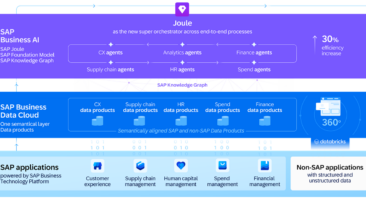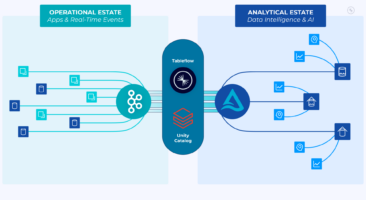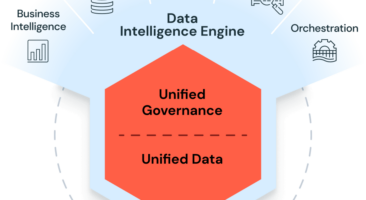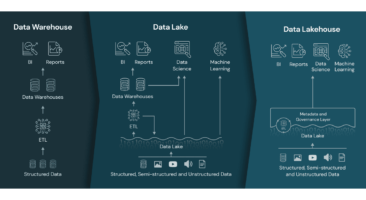The Power of Synthetic Data in Machine Learning: A Comprehensive Guide
Welcome to our comprehensive guide on the power of synthetic data in machine learning. In this post, we will explore synthetic data, how it is generated, and its advantages in machine learning. We will also discuss some limitations and essential considerations when using synthetic data. So, let’s dive in and discover how this innovative approach can enhance your machine-learning projects.
What is Synthetic Data?
Synthetic data refers to artificially generated data that mimics the statistical properties of real-world data. It is commonly used in machine learning applications as a substitute for real data, allowing researchers and developers to train models without compromising privacy or security. Generating synthetic datasets allows for exploring various scenarios and analyzing statistical patterns confidently.
Several techniques are available for generating synthetic data, including random sampling from existing datasets, using generative models such as GANs (Generative Adversarial Networks), or applying statistical algorithms to create new data points based on observed patterns. Each method has advantages and limitations depending on the desired application and dataset characteristics.
Definition and Explanation
Synthetic data refers to artificially generated information that mimics the characteristics of real-world data. It is often used in machine learning and statistical models to substitute real-world data when privacy concerns or limited access to authentic datasets arise.
Synthetic data is artificially generated information that mimics real-world data, offering a controlled environment for experimentation without compromising privacy or limited accessibility.
To generate synthetic data, algorithms are employed to simulate patterns and structures found in real-world datasets. These algorithms use statistical techniques and machine learning models to create new records that resemble the original dataset while preserving its underlying properties.
While real-world data carries inherent biases, privacy risks, and limitations on accessibility, synthetic data offers a controlled environment for experimentation without compromising sensitive information. Providing a vast array of scenarios with known ground truths enables researchers and developers to explore various possibilities efficiently.
Benefits of Using Synthetic Data
Increased privacy protection is one of the key benefits of using synthetic data, especially in sensitive datasets. Organizations can safeguard personal information by generating artificial data that mimics real-world patterns and characteristics while maintaining the statistical validity needed for machine learning models. Additionally, synthetic data reduces costs associated with traditional data collection and storage methods. With the ability to generate large amounts of diverse, labeled data, organizations can effectively train their models without relying solely on costly and time-consuming real-world datasets.
Common Applications of Synthetic Data
Training machine learning models in healthcare without compromising patient privacy is a typical application of synthetic data. Researchers and developers can use statistical techniques to generate realistic training datasets to ensure that sensitive patient information remains confidential while enabling the development of accurate and effective models. Additionally, synthetic data can simulate scenarios for testing autonomous vehicles’ algorithms, providing a safe and controlled environment to evaluate their performance in real-world situations. Furthermore, synthetic data is also valuable for generating realistic training datasets for computer vision tasks, allowing machine learning algorithms to learn from diverse examples representative of the real world.
LLMs (Large Language Models), such as GPT-4, have gained significant attention recently for their ability to generate high-quality synthetic data. This emerging technology has proven to be a valuable tool for fine-tuning other models in various domains, including natural language processing, computer vision, and speech recognition. By using LLMs to generate synthetic data, researchers and developers can create additional training examples to enhance the performance and generalizability of their models.
How is Synthetic Data Generated?
Synthetic data is generated using various techniques such as Generative Adversarial Networks (GANs), Data Augmentation, and Rule-Based Methods. GANs involve training two neural networks simultaneously, one to generate synthetic data and the other to discriminate between real and synthetic data. Data augmentation techniques involve transforming or modifying existing real datasets to create new synthetic samples. Rule-based methods use predefined rules or algorithms to generate synthetic data based on specific patterns or criteria.
Generating high-quality synthetic data faces challenges like preserving privacy and maintaining the statistical properties of the original dataset. Privacy concerns arise when generating sensitive information that can potentially identify individuals in the real world. Maintaining statistical properties ensures that the real dataset’s distribution, correlations, and other characteristics are accurately reflected in the generated synthetic dataset.
Evaluation and validation of synthetic data play a crucial role in assessing its quality and usefulness for machine learning tasks. It involves comparing performance metrics of models trained on both real and synthetic datasets to determine if they yield similar results. Other methods include analyzing feature importance, outlier detection, visual inspection, or conducting domain expert reviews to validate if the generated synthetic data aligns with expectations.
Techniques for Generating Synthetic Data
Data augmentation, generative adversarial networks (GANs), and probabilistic models are three powerful techniques for generating synthetic data in machine learning.
- Data augmentation: By applying various transformations to existing real data, such as rotation, scaling, and flipping, new synthetic samples can be created with similar characteristics to the original data.
- Generative adversarial networks (GANs): GANs consist of generator and discriminator networks trained together. The generator generates new synthetic samples while the discriminator distinguishes between real and synthetic samples. This iterative process helps improve the quality of the generated synthetic data.
- Probabilistic models: These models capture the underlying probability distributions of real data and generate synthetic samples based on those distributions. Techniques like Gaussian mixture models or Bayesian networks can generate realistic synthetic data.
These techniques provide researchers with powerful tools for creating large volumes of diverse and realistic training datasets, enabling more robust machine learning models without relying solely on scarce or sensitive real-world data.
Challenges in Generating Synthetic Data
Preserving data privacy and confidentiality is a major challenge in generating synthetic data. It requires robust techniques to protect sensitive information while maintaining the generated data’s usefulness. Data diversity and variability is another crucial challenge, as synthetic datasets must accurately represent real-world scenarios and account for different patterns and distributions. Lastly, ensuring data quality and realism is essential to generating synthetic datasets that closely resemble the characteristics of real data.
Utilizing Large Language Models in Generating Synthetic Data
Large Language Models like ChatGPT have emerged as powerful tools for generating synthetic data. These models leverage extensive training on vast amounts of text data to understand and generate coherent and contextually appropriate language. By utilizing these models, organizations can create realistic and diverse synthetic data that resembles real-world data while ensuring privacy and data protection. This approach offers several advantages, including the ability to create large volumes of data quickly and cost-effectively and the flexibility to generate data that matches specific characteristics or distributions. Moreover, large language models can be fine-tuned on specific domains or contexts, allowing for even more targeted and accurate synthetic data generation. As the field of artificial intelligence continues to advance, the potential for large language models in generating synthetic data is a promising avenue for various applications, including training and evaluating machine learning models, data augmentation, and preserving data privacy.
Evaluation and Validation of Synthetic Data
Comparing synthetic data with real-world data allows us to assess the efficacy of the generated datasets in replicating real-life scenarios. By analyzing key statistical measures and distribution patterns, we can ensure that the synthetic data accurately represents the characteristics of the original dataset.
Assessing the impact on model performance is crucial to determine whether synthetic data improves or hinders machine learning models. Through rigorous testing and benchmarking against real-world datasets, we can measure how well these models perform when trained on synthetic and authentic data sources.
Addressing bias introduced by synthetic data is critical in ensuring fair and unbiased outcomes. By thoroughly examining potential biases and disparities between real and synthesized datasets, we can implement corrective measures such as reweighting techniques or fairness constraints to mitigate any unintended consequences caused by using synthetic data in machine learning algorithms.
Advantages of Synthetic Data in Machine Learning
- Enhanced data privacy and security: Synthetic data solves the growing concerns surrounding privacy breaches and leaks. By generating artificial datasets that mimic real-world characteristics, sensitive information can be safeguarded while providing valuable insights for machine learning models.
- Expanded data availability: Traditional datasets can be limited in size, variety, or accessibility. Synthetic data bridges this gap by creating additional training examples resembling the original dataset. It enables researchers and developers to work with more diverse data sets, leading to more robust machine-learning models.
Improved Data Privacy and Security
Preserving sensitive information is crucial in today’s digital landscape. With the advancement of technology, it has become imperative to adopt robust measures that protect personal data from unauthorized access. By implementing strong encryption and access controls, organizations can mitigate the risk of data breaches and ensure the confidentiality of sensitive information.
In addition to preserving sensitive information, protecting personal data requires a proactive approach. Organizations should implement stringent security protocols and regularly update their systems to stay one step ahead of potential threats. It includes employing advanced monitoring tools and conducting routine vulnerability assessments to identify any weaknesses in their infrastructure.
Mitigating the risk of data breaches is a top priority for businesses worldwide. By adopting comprehensive cybersecurity strategies, such as multi-factor authentication and regular employee training on best practices, organizations can significantly reduce the likelihood of falling victim to cyberattacks. Additionally, incorporating robust incident response plans ensures swift action if a breach occurs, minimizing its impact on individuals’ privacy and organizational reputation.
Improved Data Privacy and Security are vital factors in today’s interconnected world where safeguarding personal information is paramount. Preserving sensitive data through encryption methods and diligent protection measures helps minimize unauthorized access risks drastically while maintaining strict control over confidential records for industries across various sectors.
Increased Data Availability
Generating large-scale datasets is crucial for advancing machine learning models. Using synthetic data, researchers and developers can create vast amounts of labeled data that accurately represent real-world scenarios. It enables the training of complex algorithms and enhances machine learning systems’ performance and generalization capabilities.
Creating diverse datasets is equally essential to ensure robustness in machine learning applications. Synthetic data allows for generating varied samples across different demographic, geographic, or socioeconomic factors. This diversity promotes comprehensive model testing and helps mitigate biases from inadequate representation in traditional datasets.
Accessing hard-to-obtain data becomes more feasible with synthetic data techniques. Certain types of sensitive or proprietary information are often challenging to collect or share due to privacy concerns or legal restrictions. Synthetic data offers a practical solution by generating realistic alternatives that preserve key statistical patterns while obfuscating personally identifiable details.
Overall, leveraging synthetic data provides unprecedented opportunities in terms of scale, diversity, and accessibility for enhancing machine learning models’ performance and addressing challenges associated with the limited availability of real-world datasets.
Reduced Bias and Imbalanced Data
Eliminating bias in training data is crucial for ensuring fairness and accuracy in machine learning models. By carefully curating and cleaning the dataset, removing any biased or discriminatory elements, we can create a more representative sample that reduces the risk of perpetuating existing biases. Additionally, addressing underrepresented classes or groups is essential to avoid marginalizing certain populations and ensure equal opportunities for everyone. By actively seeking out and including diverse examples within our training data, we can mitigate imbalances and improve overall model performance.
Furthermore, ensuring fairness in machine learning models goes beyond just balancing representation. It involves implementing techniques such as algorithmic adjustments or reweighting to prevent discrimination against specific groups. By taking proactive steps to identify potential biases during model development and testing phases, we can make informed decisions on how best to adjust our algorithms accordingly. This approach promotes ethical practices while maximizing the usefulness of machine learning technology across various domains.
Limitations and Considerations
When using synthetic data in machine learning, it is crucial to ensure that the generated data closely matches the distribution of the original dataset. Failure to do so may result in biased models that perform poorly on real-world data.
Although synthetic data can be a powerful tool for training machine learning models, there is always a risk of overfitting. It is crucial to balance creating realistic synthetic samples and ensuring generalization across different scenarios and datasets.
Synthetic data raises ethical concerns regarding privacy, consent, and potential bias. Careful consideration must be given to these issues when generating or using synthetic datasets to avoid legal complications or unethical practices.
Preserving Data Distribution
Data augmentation techniques, such as flipping, rotating, and scaling images, help preserve data distribution by generating new samples that maintain the statistical properties of the original dataset. Generative Adversarial Networks (GANs) offer another powerful approach to preserving data distribution by learning from real data and generating synthetic samples that closely resemble the original distribution. Kernel density estimation is a non-parametric method for estimating the probability density function of a dataset, providing a way to accurately represent its underlying distribution. By leveraging these techniques together, we can ensure that synthetic data remains realistic and representative of real-world scenarios in machine learning applications.
Realism and Generalization
Feature Importance Analysis is a crucial aspect of realism and generalization in machine learning. By analyzing the importance of different features, we can gain insights into which variables have the most significant impact on model performance. This analysis allows us to prioritize our data collection efforts and focus on gathering high-quality data for those influential features.
Diverse Synthetic Data Generation Methods are crucial to achieving realism and generalization in machine learning models. These methods enable us to generate synthetic datasets that closely mimic real-world data, capturing the complexities and nuances of actual data sources. We can improve model robustness and ensure better performance across various scenarios by using diverse synthetic data.
Transfer Learning Approaches are essential for enhancing realism and generalization in machine learning applications. With transfer learning techniques, models trained on one task or dataset can be leveraged to facilitate learning on new tasks or datasets with limited amounts of labeled examples available. This approach enables us to generalize knowledge learned from previous tasks or domains to novel situations, reducing the need for extensive retraining and improving overall efficiency.
Ethical and Legal Implications
Privacy protection measures are paramount when working with synthetic data in machine learning. By anonymizing and de-identifying sensitive information, privacy risks can be mitigated. Techniques such as differential privacy, federated learning, and secure multi-party computation ensure that individual identities and personal information remain confidential.
Bias and fairness considerations are crucial in using synthetic data for machine learning applications. Care must be taken to avoid reproducing biased patterns from the original dataset or introducing new biases during the generation process. Regular audits and evaluations should be conducted to ensure fair representation across different demographic groups.
Compliance with data usage policies is essential when utilizing synthetic data. It is necessary to adhere to relevant regulations, industry standards, and legal requirements regarding data collection, storage, processing, and sharing. Clear consent mechanisms should be established to maintain transparency with individuals using data synthetically.
Conclusion
The benefits of using synthetic data in machine learning are undeniable. It provides a cost-effective and efficient solution to the challenges of obtaining and labeling large datasets while preserving privacy and protecting sensitive information. However, knowing the challenges and considerations when working with synthetic data is essential, such as ensuring its quality, diversity, and representativeness. Nonetheless, the future potential of synthetic data is promising as advancements in technology continue to enhance its realism and applicability across various domains. By leveraging the power of synthetic data in machine learning applications, we can unlock new possibilities for innovation and drive progress toward more intelligent systems.


















